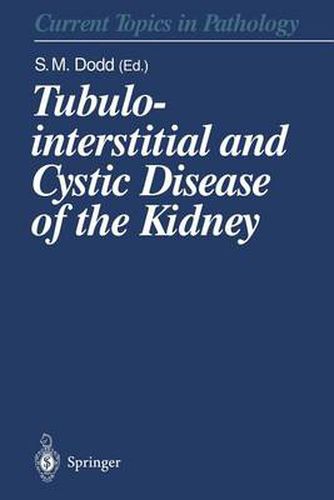Readings Newsletter
Become a Readings Member to make your shopping experience even easier.
Sign in or sign up for free!
You’re not far away from qualifying for FREE standard shipping within Australia
You’ve qualified for FREE standard shipping within Australia
The cart is loading…






This title is printed to order. This book may have been self-published. If so, we cannot guarantee the quality of the content. In the main most books will have gone through the editing process however some may not. We therefore suggest that you be aware of this before ordering this book. If in doubt check either the author or publisher’s details as we are unable to accept any returns unless they are faulty. Please contact us if you have any questions.
Over recent years, much renal research has focused on the pathology of the glomerulus, where many primary renal insults occur. However, nearly thirty years have passed since Risdon’s study made the apparently anomalous observation that the extent of damage to the tubulointerstitial compartment is the major determinant of renal outcome in a variety of human glomerular diseases. This volume covers various aspects of tubulointerstitial disease, and starts with an update on cystic disease of the kidney, by Drs. WILSON and FALKENSTEIN, which includes recent experimental data on the altered properties of cystic epithelium. My own chapter gives an overview of the mechanisms of tubulo interstitial damage in progressive renal disease and includes a dis cussion of the possible role of cytokines, vasoactive peptides and peptide growth factors found over the last few years to be secreted by renal tubular cells. These comments are expanded in the contribution by Dr. WOLF and Professor NEILSON, who provide a detailed account of the cellular biology of tubulointerstitial growth. The earliest studies from the 19608 attempted to correlate histo morphometry of the tubulointerstitium with renal outcome. Dr. KHAN and Professor SINNIAH provide us with an update on mor phometric methods as applied to the kidney using new techniques. Similar techniques are employed by Dr. IVANYI and Professor OLSEN who give a detailed stereomorphological account of tubulitis both in acute allograft rejection, where its- recognition is central to the diagnosis, and in other forms of tubulointerstitial disease.
$9.00 standard shipping within Australia
FREE standard shipping within Australia for orders over $100.00
Express & International shipping calculated at checkout
This title is printed to order. This book may have been self-published. If so, we cannot guarantee the quality of the content. In the main most books will have gone through the editing process however some may not. We therefore suggest that you be aware of this before ordering this book. If in doubt check either the author or publisher’s details as we are unable to accept any returns unless they are faulty. Please contact us if you have any questions.
Over recent years, much renal research has focused on the pathology of the glomerulus, where many primary renal insults occur. However, nearly thirty years have passed since Risdon’s study made the apparently anomalous observation that the extent of damage to the tubulointerstitial compartment is the major determinant of renal outcome in a variety of human glomerular diseases. This volume covers various aspects of tubulointerstitial disease, and starts with an update on cystic disease of the kidney, by Drs. WILSON and FALKENSTEIN, which includes recent experimental data on the altered properties of cystic epithelium. My own chapter gives an overview of the mechanisms of tubulo interstitial damage in progressive renal disease and includes a dis cussion of the possible role of cytokines, vasoactive peptides and peptide growth factors found over the last few years to be secreted by renal tubular cells. These comments are expanded in the contribution by Dr. WOLF and Professor NEILSON, who provide a detailed account of the cellular biology of tubulointerstitial growth. The earliest studies from the 19608 attempted to correlate histo morphometry of the tubulointerstitium with renal outcome. Dr. KHAN and Professor SINNIAH provide us with an update on mor phometric methods as applied to the kidney using new techniques. Similar techniques are employed by Dr. IVANYI and Professor OLSEN who give a detailed stereomorphological account of tubulitis both in acute allograft rejection, where its- recognition is central to the diagnosis, and in other forms of tubulointerstitial disease.